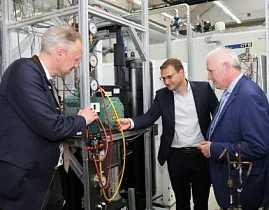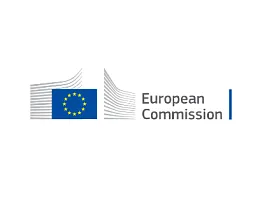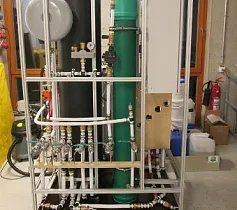Reducing greenhouse gas emissions from the heating supplied to a city in Sweden required a sea change in thinking by a major power company, using GEA’s energy-efficient heat pumps. After testing the water, a sewage plant was considered the best source for heating homes in an innovative approach for turning waste into usable energy.
As the ideal option the company decided that GEA’s ammonia heat pumps were ideal for district heating in southern Sweden, along with biomass and other renewable technologies to mitigate greenhouse gas emissions from heating. With a heating capacity of 10MW each, four GEA heat pumps were installed next to a sewage treatment plant and waste incinerator in the harbour area of the city of Malmö, where they are now providing 8% of the total energy to approximately 100,000 homes, the yearly equivalent usage of 10,000 households, contributing to around 50,000 tons of CO2 savings per year.
The heat pumps operating in Malmö use waste heat from sewage and waste incineration plants. E.ON decided to use recycled sewage water for the system due to the higher temperatures emitted by the sewage plant (14˚C) – making the water warmer than the seawater near the city which was too cold for efficient use.
Withdrawing 30MW of heat from the sewage water, the energy harvested is upgraded to useful heat for the district heating network, with the integrated heat pumps working in conjunction with the nearby waste incinerator plant. The heat pump is designed for delivering up to 80˚C but will rarely be required to deliver temperatures above 71˚C.
Whilst this is not the first time that heat pumps have been used in Sweden, the Malmo project is the first in the country to specify ammonia. E.ON opted for ammonia rather than chemical-based refrigerants due to the EU F-Gas regulation, which aims to phase down HFCs by 79% by 2030, and the company’s understanding of and commitment to its environmentally conscious customers.
Mats Egard, project manager at E.ON Värme Sverige AB, said: “It would have been cheaper to install an R134a heat pump, but we didn’t believe in that refrigerant for the future, because we are going to become 100% renewable. We’re going to supply district heating energy that is either recycled or renewable by 2025.”
Kenneth Hoffmann, GEA’s Product Manager Heat Pumps, added: “Ammonia is the way forward into a sustainable future.”
Kenneth Hoffmann summed up the science behind the cost-effective heat pump technology that is transforming district and residential heating and is delivering the recycled energy that will keep the citizens of Malmö warm well into the future.
He said: “The four heat pumps work in parallel to deliver the promised temperatures. Each has a coefficient of performance (COP) above 3.5, so for each 1kWh of electricity used by the heat pump, 3.5 kWh of heat is produced for the city.”
A heat pump system requires comprehensive analysis of the requested temperatures and assessment of the right process parameters. Every degree counts with a heat pump and the more accurate the initial design, the more energy can be saved. Instead of focusing on small pipes with large temperature difference to keep the initial cost down, a heat pump investment is based on continuous savings every day.
GEA Scope of Supply for the E.ON Malmö-project:
GEA solution: Customized heat pump system (4 heat pumps)
Heating capacity: 40 MW
Heat source: Sewage water (10°C -20°C)
Heat sink: district heating water (42°C -63°C)
Coefficient of performance (COP): >3.5 (yearly average)
Compressor type: GEA Grasso Screw compressors
Natural refrigerant: Ammonia






